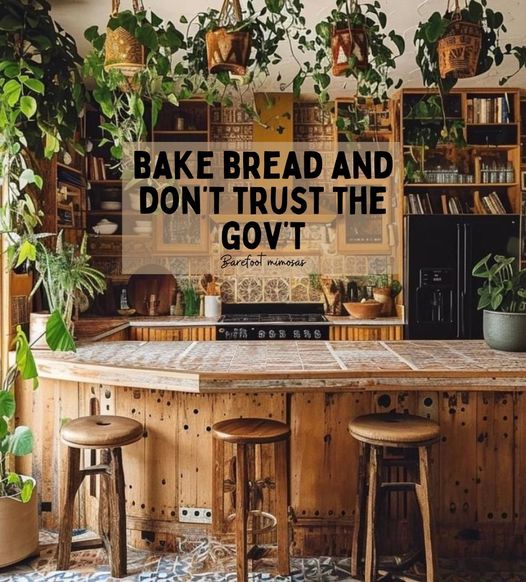Real Food – Baking
Baking treats is easy. It’s a matter of keeping certain affordable ingredients on hand. Remember that with baking you can:
- Control the kind of flour you use – organic unbleached is ideal. You may find sprouted flours even more digestible.
- Make quick breads and muffins for breakfast or snacking – these are often more digestible than yeasted breads.
- Control how much sugar you use – many recipes and commercially made baked goods are much sweeter than necessary.
- Use grass-fed butter, raw milk or yogurt instead of industrial dairy that is less digestible.
- Most of all, baking your own treats is fun! Just the act of making something often satisfies the emotional issue that led to a craving in the first place.
- Save money.
If you don’t bake often, it may seem overwhelming to read food blogs and think you have to have go buy special ingredients or tools. The truth is that everyday baking uses very basic supplies. And if you think about it, most of us are just craving something simple – a slice of banana bread or a chocolate chip cookie.
You can always add new techniques and ingredients to your repertoire later on. For now, let’s get comfortable with the basics.
Basic Baking Ingredients
Keeping these items in the pantry will ensure you can always whip something up when a craving strikes. It may seem like a long list, but most of these items are pretty affordable, and you won’t need to restock them often.
- Sugar – there’s no good way to avoid real sugar in baking.
- Brown sugar.
- Cinnamon and nutmeg.
- Unbleached flour.
- Baking soda.
- Baking powder.
- Vanilla extract – buy the real stuff if you can afford it, but imitation is okay if you can’t.
- Salt – for baking I just use regular table salt to avoid surprises, as some sea salts etc are “saltier.”
- Mix-ins: chocolate chips, white chocolate chips, dried cranberries, raisins, coconuts and/or any nuts that you like.
- Cocoa powder and/or baking chocolate – most recipes call for the latter.
- Powdered sugar – mostly for frosting, okay to skip otherwise.
- Eggs.
- Butter and/or coconut oil – try to avoid Canola, although in a pinch, using it in a homemade recipe is still healthier than getting all the gunk in a commercially-made baked good.
- Honey and molasses can be nice to have on hand but you can definitely get started without them.
A note about substitutions and special diets. I am humbly asking that you try baking simple recipes using actual, real ingredients. I grew up avoiding milk; as an adult I started eliminating various other foods to address my digestive issues. By the time I was thirty it seemed like I wasn’t eating anything real. The problem with all our special diets is that a lot of the substitutes we use can be just as hard to digest. And unless you have a genetic condition like Celiac’s, most of our food intolerances are not due to the food itself, but the way it is grown, other ingredients included alongside it, or the way it is prepared.
If you can afford it, buy grass-fed dairy products without added ingredients (always read ingredients lists), organic grains and flours, and eggs from free-range or homegrown chickens. Even if you can’t afford these, you have spared your body tons of toxic ingredients just by baking your own treats from inorganic ingredients.
A note about milk. Most baking recipes actually use sour or buttermilk. Modern buttermilk is a disgusting manmade concoction that has nothing to do with the original. It is usually easier to just keep milk on hand sour it by adding, for every cup of milk, one tablespoon of white vinegar or lemon juice. Let it sit for fifteen minutes or so until it starts to curdle.
Tools
Try to only buy dishwasher-safe items to ease cleanup. Choose a decent quality, just based on how it feels in your hands, but don’t bother spending a fortune. Baking can be messy, and it’s likely you will replace tools every year or two.
- Paper muffin / cupcake cups – buy a real brand, cheap muffin cups suck.
- Foil, waxed paper, or silicone thingies to line your…
- Baking trays – light-colored aluminum is better than dark.
- Wire cooling racks.
- Cupcake / muffin tin – the kind that holds 12 standard muffins is most versatile.
- 2-3 large mixing bowls – there’s no point buying small mixing bowls. You can use any cereal or other bowl if you need to combine smaller portions.
- Sturdy metal whisk. I don’t recommend the kind that is made of silicone-coated wire, or the kinds that are formed in a loop. Get a good, solid piano or balloon whisk.
- Silicone spoon for stirring and scraping, or wood spoons and silicone spatulas. I really love my silicone spoon.
- Measuring cups and measuring spoons – I pick these up secondhand so we have several sets and don’t run out if we get carried away.
- 9 x 12, 8 x 8 and/or 9inch round glass or nonstick baking dishes for cakes.
- 8 x 4 or similar size loaf tin(s).
- Handheld mixer is nice, although by no means required.
Get started with some easy brownies!
The best brownie recipe IMHO is Hershey’s. You can divide this in half; use 1/3 cup cocoa and still use 1/4 teaspoon salt. We rarely bother frosting it. This has been my family’s late-night go-to for twenty years. My sweetie adds chocolate chips and/or peanut butter for extra amazingness. It is a forgiving recipe.
If you enjoyed this post,, subscribe for more.

